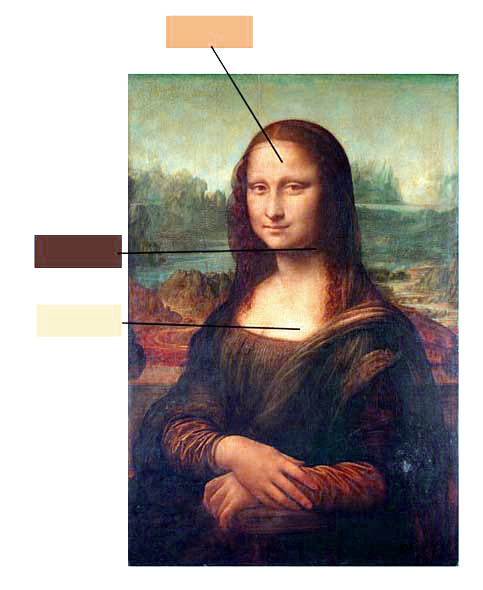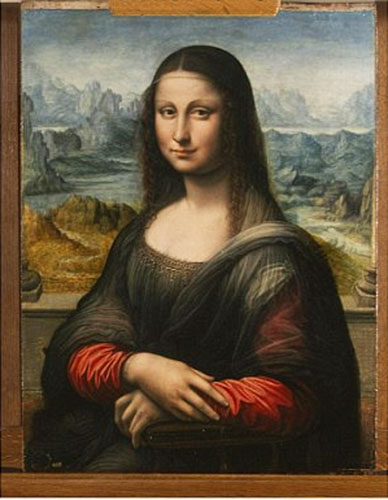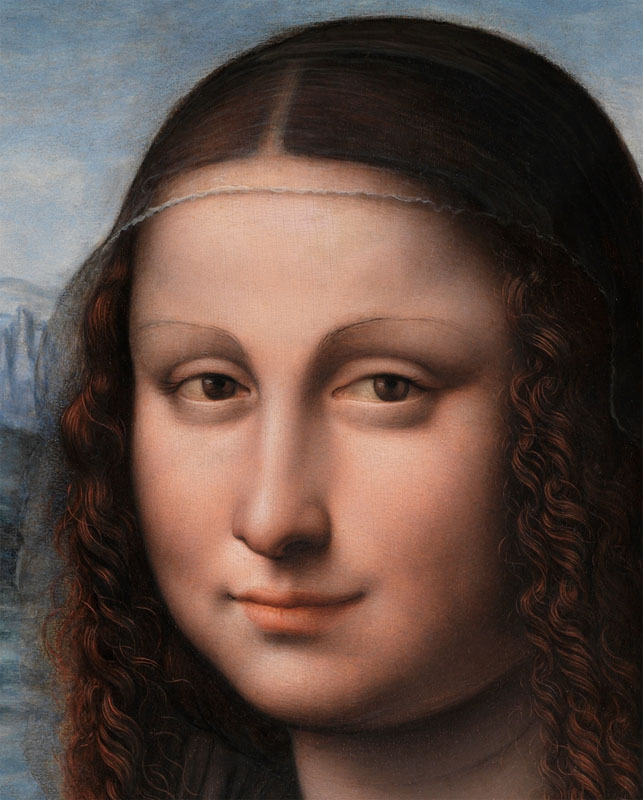Home › Forums › The Learning Center › Color Theory and Mixing › How I get a pure fine face colors ala renaissance faces
- This topic has 25 replies, 9 voices, and was last updated 6 years, 11 months ago by
 stlukesguild.
stlukesguild.
-
AuthorPosts
-
April 16, 2017 at 2:32 pm #995023
Hi,
I would like to get the face glaze color for my face. I am finished with the steps and I would like to mix the last glazes to get this warm pure white red. How I can mix this, ala mona lisa or other renaissance faces? What colors i need for? I use lead white with cadmium red middle, but I do not get this white face color.
FB https://www.facebook.com/art.painting.imp
Art-Website: KunstApril 17, 2017 at 1:41 pm #1268384May I ask, are you interesting the the glazing technique? Or are you interested in the pale colour of the Mona Lisa’s face? I think maybe these are two different things, in a way…
… perhaps you could share which tubes of paint you are using for mixing your skin tones? Then, could you share (post) an example of a face you have painted? This may help the knowledgeable folks who paint portraits come up with some advice. Thanks!
April 17, 2017 at 2:59 pm #1268385Here’s some food for thought regarding “Reconstructing Mona Lisa“
April 22, 2017 at 11:52 am #1268394Thank you for you answered. I read the very interestinglink from KolinskyRed. Now I have problems with the shadow of the face and my face look like to hard and not so soft. Is the last goal that I use glazes with lead white and little cadmium red middle or use pure oil only?
FB https://www.facebook.com/art.painting.imp
Art-Website: KunstApril 23, 2017 at 9:40 am #1268397Here’s some food for thought regarding “[URL=https://ceroart.revues.org/3828]Reconstructing Mona Lisa[/URL]“
Wow, that’s really interesting, thanks! I think if the OP carefully looks at a very pale white person they will see a fair amount of yellow, not just pink. From the article -“There are few indications concerning pigment selection and paint handling by Leonardo that could be used as guidelines in this work. For mixing the flesh tints, he advised the mixture of opaque pigments ‘white, lake and Naples yellow’ and for shades a mixture of ‘black, umber and a little lake’” (not sure what ‘lake’ is, must be a red.)
~Christine
April 23, 2017 at 2:20 pm #1268390Here’s some food for thought regarding “[URL=https://ceroart.revues.org/3828]Reconstructing Mona Lisa[/URL]“
Good article!
“For mixing the flesh tints, he (Leonardo da Vinci) advised the mixture of opaque pigments ‘white, lake and Naples yellow’ and for shades a mixture of ‘black, umber and a little lake’, whereas for glazing he instigates the importance of transparent pigments such as azurite, lake, etc. “
What is “lake” here?
I understand that “lake” means a colorless big particle coated with color dye. But what dye in Leonardo/Mona Lisa’s case?
April 23, 2017 at 5:33 pm #1268374Just to eliminate all the anguish, please allow me to offer a few suggestions, regarding skin colors for painting a portrait.
First, nearly all human skin colors can be simulated by using only 4 colors:
White, Black, Yellow Ochre, and Venetian Red (also known as Terra Rosa).To check this out, just use only these 4 colors, and by mixing them together, you will be able to absolutely match the base color of your own skin. Check this out by mixing these colors together until you can smear some of your paint mixture on your own forearm, and not be able to detect where your skin begins, and the mixed color leaves off.
I will guarantee that this can be done.
However, many of these old masters paintings contain very little, actual “red”.
Take the Mona Lisa for example:
These callout colors represent the true colors of which much of her skin is composed. Print this out, mix your paint to match these color blocks, and compare your mixtures by smearing paint right on top of (or next to) these samples.
There should be no mystery concerning the colors that occur within old master portraits such as the Mona Lisa. Mixing colors with paint, to match actual colors of old master portraits is a very easy thing to do.
wfmartin. My Blog "Creative Realism"...
https://williamfmartin.blogspot.comApril 23, 2017 at 8:40 pm #1268392Actually, there is little doubt in my mind that the original Mona Lisa looked more like this, in which case the top color would require some Venetian Red:
 April 23, 2017 at 11:05 pm #1268386
April 23, 2017 at 11:05 pm #1268386From what I’ve seen Mal3 post so far, he’s completed the underlayers and is seeking advice on the glazing ~ hence the portrait he’s posted is light and pale, and will have, possibly, slightly darker tones as a result of the glazing layers. So I think the question Mal3 is asking, is what mix to use for the glazing over the present version of his portrait to get the rosy, natural skin tones in the Renaissance style? Naturally, the present Mona Lisa is very dark and dirty from centuries of exposure, and the aging varnishes – so that’s not natural skin colour, I don’t think. PInguino is closer, but perhaps the Prado Museum’s restored contemporary copy of DaVinci’s painting is more the colouration, based on the background colours Mal3 has used, and the light skin tones (pre-glazing)?

Some background on this painting, and another image with different colour balance here.
April 24, 2017 at 6:01 am #1268395Yes KolinskyRed. That is that i mean. I looking for the glazing colors.
FB https://www.facebook.com/art.painting.imp
Art-Website: KunstApril 24, 2017 at 7:15 am #1268378Just to eliminate all the anguish, please allow me to offer a few suggestions, regarding skin colors for painting a portrait.
First, nearly all human skin colors can be simulated by using only 4 colors:
White, Black, Yellow Ochre, and Venetian Red (also known as Terra Rosa).To check this out, just use only these 4 colors, and by mixing them together, you will be able to absolutely match the base color of your own skin. Check this out by mixing these colors together until you can smear some of your paint mixture on your own forearm, and not be able to detect where your skin begins, and the mixed color leaves off.
I will guarantee that this can be done.
.That red is the one some companies call red oxide nowadays?
"no no! You are doing it all wrong, in the internet we are supposed to be stubborn, inflexible and arrogant. One cannot simply be suddenly reasonable and reflexive in the internet, that breaks years of internet tradition as a medium of anger, arrogance, bigotry and self entitlement. Damm these internet newcomers being nice to to others!!!"
"If brute force does not solve your problem, then you are not using enough!"
April 24, 2017 at 9:17 am #1268398That red is the one some companies call red oxide nowadays?
No, I think if it had been an earth color, DaVinci would have said so. I tried to look it up – red lake is from the “secretion of the “coccus laccae” insect that lives in the bark of the Ficus tree, it’s often called shellac….Red shellac is from East India, the red is the dye, removed by boiling in water (and) precipitated on a clay base.” [ie, laked.] A study refers to it as “cochineal red-violet lake” (https://www.ncbi.nlm.nih.gov/pubmed/26472321). So unless someone knows of a chart comparing old paints to modern ones, I think the red lake DaVinci was talking about would be a red-magenta or alizarin type color.
Mal3’s image looks quite close to the one posted last by KolinskyRed.~Christine
April 24, 2017 at 9:23 am #1268379Well then I know what pigment that is…. cochineal means is the same pigment used in foods to make “strawberry”. Its make from this animal roasted http://www.dedetizacao-consulte.com.br/cochonilha/cochonilha.jpg
But I doubt any brand uses it in art paints since it is not extremely light fast option.
"no no! You are doing it all wrong, in the internet we are supposed to be stubborn, inflexible and arrogant. One cannot simply be suddenly reasonable and reflexive in the internet, that breaks years of internet tradition as a medium of anger, arrogance, bigotry and self entitlement. Damm these internet newcomers being nice to to others!!!"
"If brute force does not solve your problem, then you are not using enough!"
April 24, 2017 at 10:28 am #1268387Here’s a close-up from the Prado painting, post cleaning/restoration, something I don’t think they’ll ever do to DaVinci’s painting. It is thought that since the evidence is pointing to this painting below having been painted in DaVinci’s workshop, it is speculated that the painter saw the original, fresh-of-the-easel Mona Lisa:

Source: The wiki entry image, from my previous post. When I click on that image first once, then I clicked on the new image again, and lastly clicked on the image I was looking at once more ~ there’s an amazingly detailed close up to pan around on. What a delight:)
Surely there are contemporary options for a final glazing in this style?
The amazing Will Kemp’s latest offering I’ve received in my email is about glazing techniques, here’s his preview:
He trained in classical Italian methods himself. It appears he premixed a succession increasingly “fat” (more oil?) glazes…
April 24, 2017 at 12:19 pm #1268380Well, I have started with painting not long ago (was from colored pencils world) but when I try to achieve tones like that I make a glaze of red oxide transparent and transparent yellow oxide. Alternating with glazes of white with a tad of transparent burnt sienna.
Always good to know what other people are trying / using. I want to make realistic skin when I make portraits, but I cannot use oils because of a very chronic respiratory problem.
"no no! You are doing it all wrong, in the internet we are supposed to be stubborn, inflexible and arrogant. One cannot simply be suddenly reasonable and reflexive in the internet, that breaks years of internet tradition as a medium of anger, arrogance, bigotry and self entitlement. Damm these internet newcomers being nice to to others!!!"
"If brute force does not solve your problem, then you are not using enough!"
-
AuthorPosts
- The topic ‘How I get a pure fine face colors ala renaissance faces’ is closed to new replies.
Register For This Site
A password will be e-mailed to you.
Search